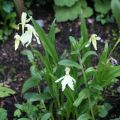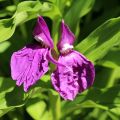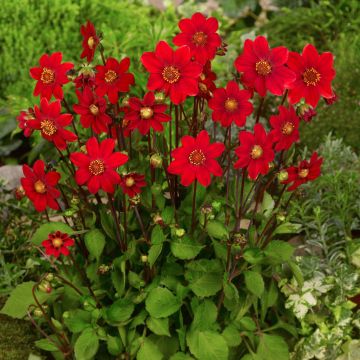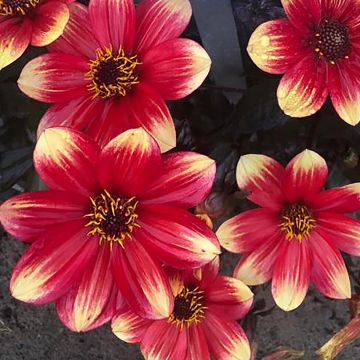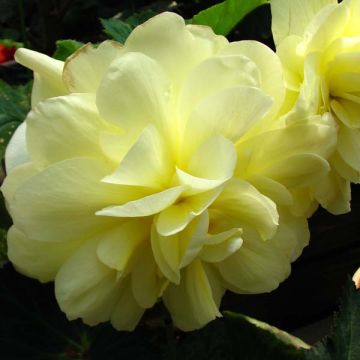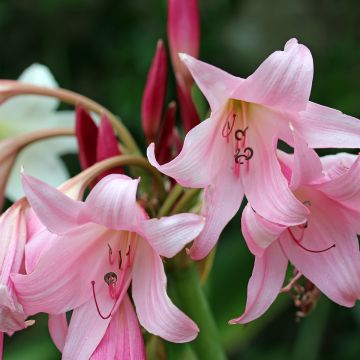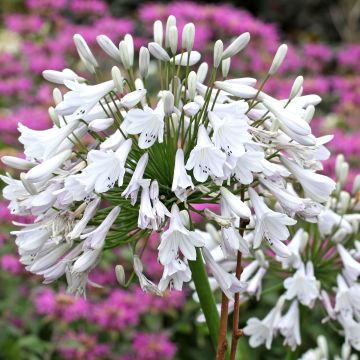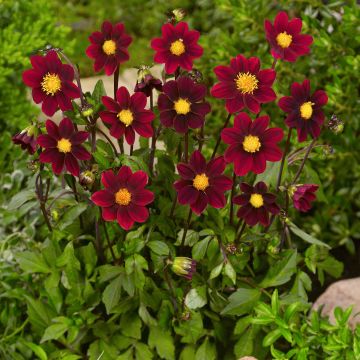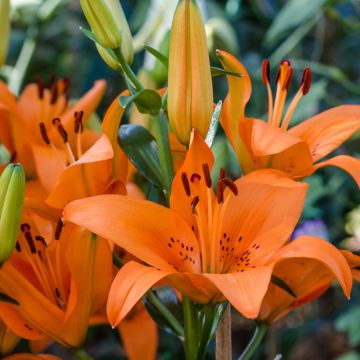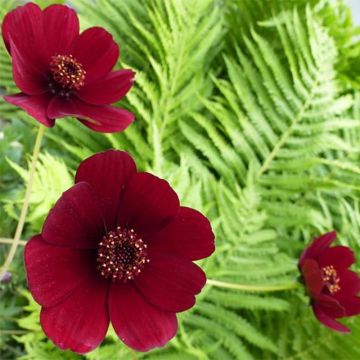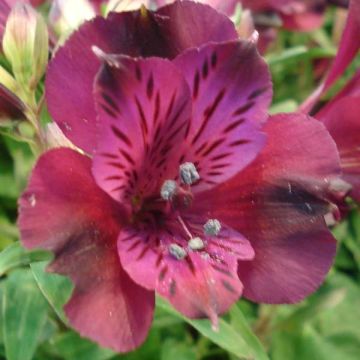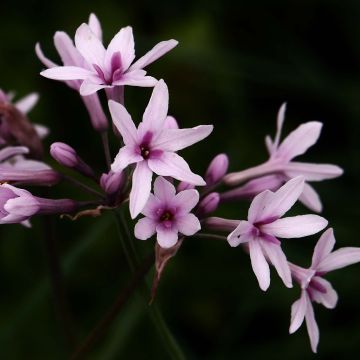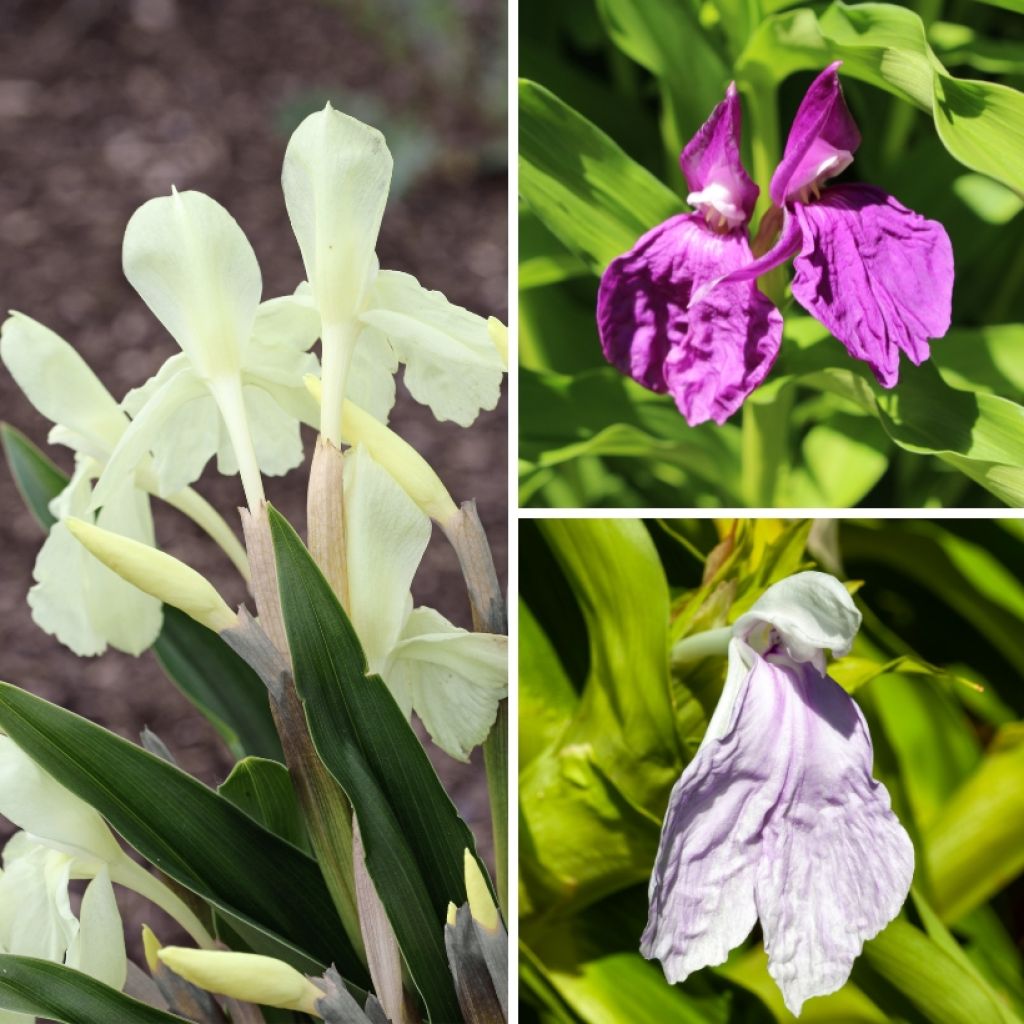

Roscoeas Collection
Roscoeas Collection
Roscoea beesiana, purpurea
This plant carries a 6 months recovery warranty
More information
We guarantee the quality of our plants for a full growing cycle, and will replace at our expense any plant that fails to recover under normal climatic and planting conditions.
From €5.90 for pickup delivery and €6.90 for home delivery
Express home delivery from €8.90.
Does this plant fit my garden?
Set up your Plantfit profile →
Collection items (3 plants)
Description
The Roscoeas Collection offers a stunning variety of roscoeas, including the Roscoea beesiana 'Alba' showcasing white flowers, the Roscoea beesiana with cream to yellow flowers striped with violet, and the Roscoea purpurea featuring deep purple blooms. These bulbous plants produce vibrant green foliage, either narrow and deciduous or semi-evergreen, depending on the specific variety. Their unique, exotic-looking flowers consist of a long curving tube and three petals, with the upper petal forming a galea and the lower one forming a labellum. Popularly known as "Orchid Ginger," these plants bloom from June to September and can withstand temperatures as low as -20°C, thriving in cool, slightly acidic, and well-drained soil. Roscoeas are excellent for adding beauty to a heather bed.
The collection includes:
-
x 1 Roscoea beesiana 'Alba: Exhibiting bright white flowers, vibrant green foliage, reaching a height of 60 cm, and flowering from June to July.
-
x 1 Roscoea beesiana: Showcasing cream to yellow flowers with violet stripes, green deciduous foliage, standing at 50 cm in height, and blossoming from July to August.
-
x 1 Roscoea purpurea: Featuring deep purple flowers, evergreen foliage, growing up to 70 cm in height, and flowering from August to September.
Each bulb is labeled separately.
Plant these "false orchids" in well-drained, slightly acidic to neutral soil rich in humus during spring or autumn. Space the bulbs 20 cm apart in a bed or border, planting them 5 to 10 cm underground. Opt for a partially shaded location, or alternatively, grow them in pots with 3 bulbs per 18 cm pot. Keep in mind that the young shoots take time to emerge from the ground in spring.
To complement this collection, pair the Roscoeas with Hostas 'Blue Angel' for their voluminous foliage, Astilbes 'Fanal' for their red spikes, and Heucheras 'Palace Purple' with beautiful purple leaves. Arrange these perennials in front of the Roscoeas to create a striking contrast in height and color, resulting in a harmonious arrangement. Additionally, these bulbous plants are ideal for enhancing the base of hydrangeas or rhododendrons.
Report an error about the product description
Plant habit
Flowering
Foliage
Botanical data
Roscoea
beesiana, purpurea
Zingiberaceae
Cultivar or hybrid
Other Roscoea
Planting and care
The Roscoea should be planted in spring, at a depth of 8-10 cm and spaced 20 cm apart, in partial shade, in neutral to acidic soil, which remains slightly moist even in summer. They are very hardy down to -20°C in light, well-drained soil with a thick mulch. You can also grow them in pots, 3 per 18 cm pot, preferably in partial shade.
Planting period
Intended location
Care
This item has not been reviewed yet - be the first to leave a review about it.
Bulbs to grow in pots
Haven't found what you were looking for?
Hardiness is the lowest winter temperature a plant can endure without suffering serious damage or even dying. However, hardiness is affected by location (a sheltered area, such as a patio), protection (winter cover) and soil type (hardiness is improved by well-drained soil).

Photo Sharing Terms & Conditions
In order to encourage gardeners to interact and share their experiences, Promesse de fleurs offers various media enabling content to be uploaded onto its Site - in particular via the ‘Photo sharing’ module.
The User agrees to refrain from:
- Posting any content that is illegal, prejudicial, insulting, racist, inciteful to hatred, revisionist, contrary to public decency, that infringes on privacy or on the privacy rights of third parties, in particular the publicity rights of persons and goods, intellectual property rights, or the right to privacy.
- Submitting content on behalf of a third party;
- Impersonate the identity of a third party and/or publish any personal information about a third party;
In general, the User undertakes to refrain from any unethical behaviour.
All Content (in particular text, comments, files, images, photos, videos, creative works, etc.), which may be subject to property or intellectual property rights, image or other private rights, shall remain the property of the User, subject to the limited rights granted by the terms of the licence granted by Promesse de fleurs as stated below. Users are at liberty to publish or not to publish such Content on the Site, notably via the ‘Photo Sharing’ facility, and accept that this Content shall be made public and freely accessible, notably on the Internet.
Users further acknowledge, undertake to have ,and guarantee that they hold all necessary rights and permissions to publish such material on the Site, in particular with regard to the legislation in force pertaining to any privacy, property, intellectual property, image, or contractual rights, or rights of any other nature. By publishing such Content on the Site, Users acknowledge accepting full liability as publishers of the Content within the meaning of the law, and grant Promesse de fleurs, free of charge, an inclusive, worldwide licence for the said Content for the entire duration of its publication, including all reproduction, representation, up/downloading, displaying, performing, transmission, and storage rights.
Users also grant permission for their name to be linked to the Content and accept that this link may not always be made available.
By engaging in posting material, Users consent to their Content becoming automatically accessible on the Internet, in particular on other sites and/or blogs and/or web pages of the Promesse de fleurs site, including in particular social pages and the Promesse de fleurs catalogue.
Users may secure the removal of entrusted content free of charge by issuing a simple request via our contact form.
The flowering period indicated on our website applies to countries and regions located in USDA zone 8 (France, the United Kingdom, Ireland, the Netherlands, etc.)
It will vary according to where you live:
- In zones 9 to 10 (Italy, Spain, Greece, etc.), flowering will occur about 2 to 4 weeks earlier.
- In zones 6 to 7 (Germany, Poland, Slovenia, and lower mountainous regions), flowering will be delayed by 2 to 3 weeks.
- In zone 5 (Central Europe, Scandinavia), blooming will be delayed by 3 to 5 weeks.
In temperate climates, pruning of spring-flowering shrubs (forsythia, spireas, etc.) should be done just after flowering.
Pruning of summer-flowering shrubs (Indian Lilac, Perovskia, etc.) can be done in winter or spring.
In cold regions as well as with frost-sensitive plants, avoid pruning too early when severe frosts may still occur.
The planting period indicated on our website applies to countries and regions located in USDA zone 8 (France, United Kingdom, Ireland, Netherlands).
It will vary according to where you live:
- In Mediterranean zones (Marseille, Madrid, Milan, etc.), autumn and winter are the best planting periods.
- In continental zones (Strasbourg, Munich, Vienna, etc.), delay planting by 2 to 3 weeks in spring and bring it forward by 2 to 4 weeks in autumn.
- In mountainous regions (the Alps, Pyrenees, Carpathians, etc.), it is best to plant in late spring (May-June) or late summer (August-September).
The harvesting period indicated on our website applies to countries and regions in USDA zone 8 (France, England, Ireland, the Netherlands).
In colder areas (Scandinavia, Poland, Austria...) fruit and vegetable harvests are likely to be delayed by 3-4 weeks.
In warmer areas (Italy, Spain, Greece, etc.), harvesting will probably take place earlier, depending on weather conditions.
The sowing periods indicated on our website apply to countries and regions within USDA Zone 8 (France, UK, Ireland, Netherlands).
In colder areas (Scandinavia, Poland, Austria...), delay any outdoor sowing by 3-4 weeks, or sow under glass.
In warmer climes (Italy, Spain, Greece, etc.), bring outdoor sowing forward by a few weeks.

































